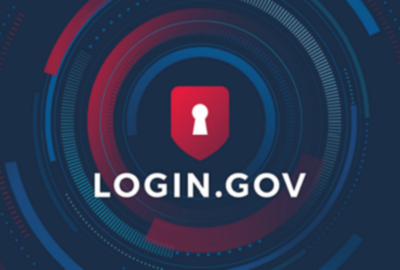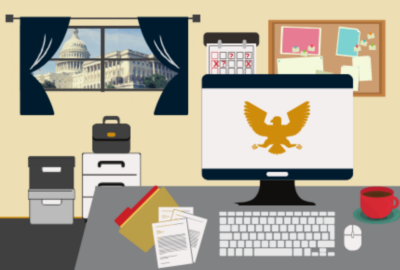Hubbard Radio Washington DC, LLC. All rights reserved. This website is not intended for users located within the European Economic Area.
Avoiding buying fake products for your loved ones during the holiday season
This year, counterfeit personal protective gear has joined the piles of fake luggage, cosmetics and electronics.
Best listening experience is on Chrome, Firefox or Safari. Subscribe to Federal Drive’s daily audio interviews on Apple Podcasts or PodcastOne.
Tis the season to be jolly. And also to buy, unwittingly for not, billions of dollars worth of counterfeit products. This year, counterfeit personal protective gear has joined the piles of fake luggage, cosmetics and electronics. With an update, the executive director of the Office of Trade Policy and Programs at U.S. Customs and Border Protection, John Leonard, joined Federal Drive with Tom Temin.
Interview transcripts:
Tom Temin: Mr. Leonard, good to have you on.
John Leonard: Good morning Tom, how are you?
Tom Temin: And this is the time of year when all of this seems to rise to the highest level isn’t it for the Christmas in the holiday buying season, fair to say?
John Leonard: Yeah, this is obviously when consumers are kind of buying in mass and we are seeing more shipments, although Customs and Border Protection start seeing holiday rush shipments as early as July or August.
Tom Temin: And how do you identify which shipments, which containers, and where do you know where to start hunting for this mass importation of this kind of stuff?
John Leonard: Right, so we employ kind of a layered strategy of targeting. We have a pretty sophisticated cargo computer system, which allows us to get advanced information on shipments that depart from various foreign ports. And we’ll target based on a range of criteria, and that allows our officers in the field to kind of focus in on containers and packages that pose the most risk. But a lot of it is actually just officer intuition that goes beyond what the computer will tell them. They know trends and identifiers and packages, and where to look. It just comes through years of experience.
Tom Temin: Are there certain regions of the world, not just China, but areas of China within the country or other countries that tend to produce this kind of stuff?
John Leonard: Well, a lot of the stuff is produced in Asia, and China is a focus for it. And a lot of the stuff is produced in the same regions where legitimate trademark products are produced, so it does get a little complex. But a great many of our counterfeit seizures originate in China.
Tom Temin: And if you suspect something is a counterfeit shipment, and it has Louie Vuitton baggage or watches or whatever, what happens?
John Leonard: So what we do is initially we detain the shipment, and then we immediately contact the rights holder. We have long standing very good collaborative relationships with all the trademark holders. And then they very quickly confirm that the shipment is in fact infringing, they know almost instantaneously. And then we actually seize the good and is prevented from being entered into the commerce of the United States. And depending on the follow on legal procedure, the goods very likely can end up being destroyed.
Tom Temin: Sure. And there must be some information on the destination, which is people that are knowingly distributing and selling counterfeit goods. How does that happen?
John Leonard: That is correct. Yeah. So if it’s a big enough repetitive type of importer versus your grandmother, right, we do work closely with our partners in Homeland Security Investigations within the Department of Homeland Security, and they can actually pursue criminal cases against these larger egregious folks.
Tom Temin: And I imagine the legitimate retailers or resellers also want to work with you so that they don’t unwittingly sell stuff that’s not genuine.
John Leonard: They do yeah. We have, again, good relationships with all of the large retail companies who themselves are importers. And they employ kind of a, usually, a pretty robust system of ensuring that they don’t put counterfeits out on their actual brick and mortar store shelves. I think the bigger danger comes with those e-commerce shipments that folks are kind of making on their own with unreputable suppliers.
Tom Temin: Yes, because I was in my local running shoe store yesterday, and I’ve been dealing with them for probably all the years, I’ve been running actively. And I said, how’s business? He said, well it’s good, but we can’t get the shoes. He says the manufacturers designate most of it for Amazon and the rest of us retailers with brick and mortar have to kind of fight over the scraps of supply from legitimate suppliers. I imagine that has an effect on the fact of so much commerce going online. Has that affected the counterfeit trade market?
John Leonard: Yeah, I mean, it has. We’ve seen a shift in the trends from the traditional years and years ago, where you had more traditional importers bringing in large amounts in seaborne containers. We still see the same seaborne freight, but it can be broken up into hundreds and thousands of smaller shipments destined for individuals. And so the the e-commerce revolution, if you will, has changed the way supply chains work. And frankly, has made it a little bit easier for counterfeiters to get their products into that supply chain.
Tom Temin: Because you don’t see the rows and block long lengths of tabletop vendors and coat jacket open vendors of watches and so forth in places like New York City. You don’t see as much of that anymore. It’s it seems like it’s mostly gone online.
John Leonard: Yeah, a lot of it has, I suppose those flea markets and different stand up type of places exist, but let’s face it less now and especially with a pandemic. There’s more folks just relying on online shipments.
Tom Temin: And what about the pandemic? Has that opened up new vistas of fake products like masks and whatever you can think of, personal protection?
John Leonard: Yep, absolutely. So counterfeiters will kind of hop on to whatever the latest trend is, or whatever the latest big selling items are, items that are moving within commerce. And this has been, sadly, very, very true of the of items associated with the pandemic, you mentioned masks. And in the past year, Customs and Border Protection has seized over 13.5 million N95 masks, essentially fake masks, which do not have the true N95 capability. We’ve seized over 177,000 sham test kits. So these are COVID test kits that would not work. And there’s been others too, but yeah, the pandemic, and the increase in these type of shipments have been worrying. But Customs and Border Protection, again, we are there 365,24 hours a day at all of our ports of entry trying to make sure that this stuff does not get in. And one of the next things that obviously we’ll be looking for is any type of fake or counterfeit vaccines as well.
Tom Temin: Yeah, I was wondering about that. If it comes and it’s warm, probably, you may not want to accept it.
John Leonard: Yeah. Luckily the legitimate suppliers who we work with very, very closely have very good secure supply chains. And they work with Customs and Border Protection to make sure that their shipments are inspected quickly and released quickly. And we’ve been doing that for a number of weeks now.
Tom Temin: And you mentioned Homeland Security Investigations. I imagine beyond DHS, this is almost a whole of government effort to clamp down on counterfeiting.
John Leonard: It is. I think you find a little bit less so with state and local folks. They will get involved when they have the bandwidth, but they’ve been so busy now with pandemic stuff and other issues. A lot of it is left to the federal sector. But again, we have an aggressive well resourced effort to prevent counterfeits, at least from coming in from foreign which is where most of them are produced.
Tom Temin: And what is the biggest category in terms of dollar value would you say of counterfeiting? Or does it vary from year to year?
John Leonard: Traditionally, year to year, it’s in that clothing and apparel sector, and watches as well in terms of what the actual top value, but we see all types of goods. We see counterfeit electronic goods, which can pose a health threat with batteries etc. exploding. We see counterfeit pharmaceuticals, which obviously pose health threats. We see counterfeit items in the automotive sector, specifically counterfeit airbags, which can be very, very dangerous, they do not deploy and protect the driver, they can actually explode and cause great injury or death.
Tom Temin: And I guess the rise of the streaming technology has pretty much gotten rid of the issue of fake CDs and tapes and cassettes and all of that.
John Leonard: Yeah, a little bit less on that side. Years ago, would we’d see more of the counterfeit CDs, music CDs and DVDs and stuff. But that’s lessened a little bit with the digital streaming revolution.
Tom Temin: And finally, as a consumer yourself, what strategies do you use to make sure you’re getting the real McCoy?
John Leonard: So the best advice that we can give is to really pay attention to who the supplier is that you’re buying from online. So if you’re on a platform, if you’re on eBay, or Amazon, read reviews. Make sure that they’re a company that has a US presence and can be contacted in the US. Just do that extra research. Obviously, if you’re buying from the legitimate trademark holder on their website themselves, that’s great because you know you’re gonna be getting a legitimate product. Also probably doesn’t need to be mentioned, but if you’re seeing an artificially low price for a brand name good, that’s a pretty big clue as well.
Tom Temin: Alright. John Leonard is Executive Director of the Office of Trade Policy and Programs at US Customs and Border Protection. Thanks so much for joining me.
John Leonard: Thank you so much, Tom.
Copyright © 2024 Federal News Network. All rights reserved. This website is not intended for users located within the European Economic Area.
Tom Temin
Tom Temin is host of the Federal Drive and has been providing insight on federal technology and management issues for more than 30 years.
Follow @tteminWFED
Related Stories
First Look
IT Modernization
Read more





